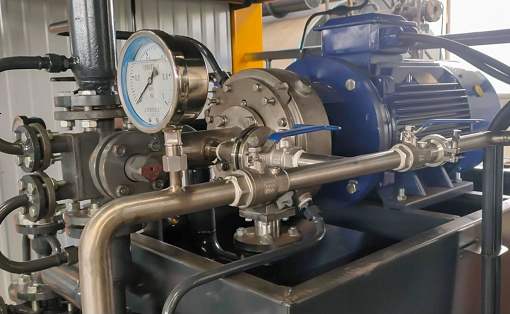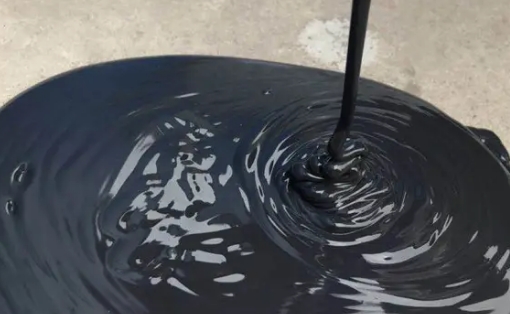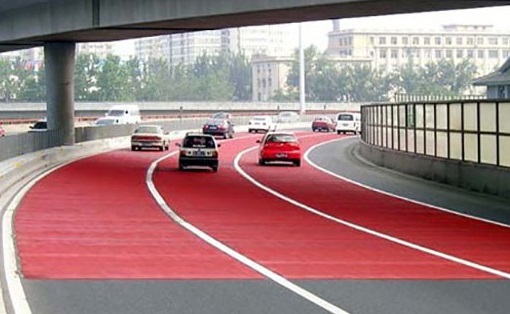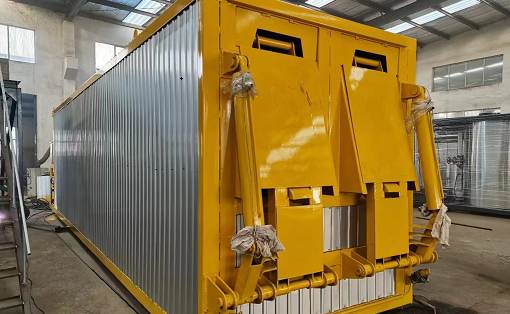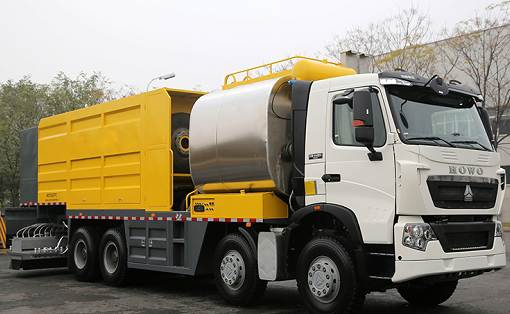Common diseases of asphalt pavement on roads and bridges
1 Common diseases of asphalt pavement
There are nine phenomena of early damage to asphalt pavement: rutting, cracks, and potholes. These diseases are the most common and serious, and are one of the common quality problems of highway projects.
1.1 Rutting
Rutting refers to the longitudinal strip grooves on the road surface along the wheel tracks, with a depth of more than 1.5cm. Rutting is a strip groove formed by the accumulation of permanent deformation of the road surface under the repeated action of vehicle load. Rutting reduces the smoothness of the road surface. When the rutting reaches a certain depth, due to the accumulation of water in the rutting, it is easy for cars to slide and cause traffic accidents. The main reasons for rutting are unreasonable design and serious overloading of vehicles.
1.2 Cracks
There are three main forms of cracks: longitudinal cracks, transverse cracks and mesh cracks. When cracks occur in asphalt pavement, water seepage occurs, which harms the surface layer and base layer.
1.3 Potholes
Potholes are common early diseases of asphalt pavement, which refer to the road surface being damaged into potholes with a depth of more than 2cm and an area of ??more than 0.04㎡. The main reason for the formation of potholes is that the oil used in vehicle repair or motor vehicles seeps into the road surface, polluting the asphalt mixture and causing it to loosen. The pits are gradually formed by driving and rolling.
1 Common diseases of asphalt pavement
There are nine phenomena of early damage to asphalt pavement: rutting, cracks, and potholes. These diseases are the most common and serious, and are one of the common quality problems of highway projects.
1.1 Rutting
Rutting refers to the longitudinal strip grooves on the road surface along the wheel tracks, with a depth of more than 1.5cm. Rutting is a strip groove formed by the accumulation of permanent deformation of the road surface under the repeated action of vehicle load. Rutting reduces the smoothness of the road surface. When the rutting reaches a certain depth, due to the accumulation of water in the rutting, it is easy for cars to slide and cause traffic accidents. The main reasons for rutting are unreasonable design and serious overloading of vehicles.
1.2 Cracks
There are three main forms of cracks: longitudinal cracks, transverse cracks and mesh cracks. When cracks occur in asphalt pavement, water seepage occurs, which harms the surface layer and base layer.
1.3 Potholes
Potholes are common early diseases of asphalt pavement, which refer to the road surface being damaged into potholes with a depth of more than 2cm and an area of ??more than 0.04㎡. The main reason for the formation of potholes is that the oil used in vehicle repair or motor vehicles seeps into the road surface, polluting the asphalt mixture and causing it to loosen. The pits are gradually formed by driving and rolling.
1.4 Peeling
Peeling of asphalt pavement refers to the layered shedding of the pavement surface layer, with an area of ??more than 0.1㎡. The main cause of asphalt pavement peeling is water damage.
1.5 Looseness
The looseness of asphalt pavement refers to the loss of adhesion of the pavement binder and the loosening of aggregates, with an area of ??more than 0.1㎡.
2 Maintenance measures for common diseases of asphalt pavement
For the diseases of asphalt pavement that occur early, we must do a good job of maintenance in time, so as to minimize the impact of the disease on the driving safety of asphalt pavement.
2.1 Rut repair
There are several main methods for repairing ruts on asphalt roads:
2.1.1 If the surface of the lane is rutted by vehicles. The surface layer with ruts should be cut or milled away, and then the asphalt surface layer should be repaved. Then use mastic asphalt crushed stone mixture (SMA) or SBS modified asphalt single mixture, or polyethylene modified asphalt mixture to repair the ruts.
2.1.2 If the road surface is lateral and the ruts are formed by lateral extrusion, if it is stable, the protruding part can be cut off, and the trough part can be sprayed or brushed with bonding asphalt and filled with asphalt mixture and leveled and compacted.
2.1.3 If the ruts are caused by the lack of strength of the base layer and poor water stability, the base layer should be treated first. The surface layer and base layer should be completely excavated.
2.2 Crack repair
After the cracks in the asphalt pavement are generated, if they are all or most of the minor cracks that can be healed in the hot season, they can be left untreated. If there are minor cracks that cannot be healed in the hot season, they should be repaired in time to control the further expansion of the cracks, prevent the road from being damaged early, and improve the efficiency of highway use. Similarly, when repairing cracks in asphalt pavement, strict process operation and specification requirements should be followed.
2.2.1 Oil filling repair method. In winter, clean the vertical and horizontal cracks, heat the crack wall with liquefied gas to a viscous state, and then spray asphalt or asphalt mortar (emulsified asphalt should be sprayed in low temperature and humid seasons) into the cracks, and then evenly spread a layer of 2-5mm dry and clean stone chips or coarse sand for protection, and finally use a light roller to roll the mineral material. If it is a small crack, it should be widened in advance with a disc milling cutter, and then treated according to the above method, and a small amount of low-viscosity asphalt should be applied along the cracks.
2.2.2 Repair the cracked asphalt pavement. During construction, first chisel away the old traces of the cracks to form a V-shaped groove; then use an air compressor to blow away the loose parts and dust and other debris in and around the V-shaped groove, and then use an extrusion gun to pour the evenly mixed repair material into the cracks to make them full. After the repair material solidifies, it can be opened to traffic in about a day. In addition, if severe cracks are caused by insufficient strength of the soil base or base layer or mud overflow of the roadbed, the base layer should be treated first and then the surface layer should be remade.
2.3 Care of potholes
2.3.1 Care methods when the base layer of the road is intact and only the surface layer has potholes. According to the principle of “round hole square patch”, draw the pothole repair contour line parallel or perpendicular to the center line of the road, and carry out in a rectangular or square shape. Chisel the pothole to the stable part, use an air compressor to clean the dust and loose parts of the bottom and wall of the pothole, and then spray a thin layer of bonding asphalt on the clean bottom and wall of the pothole, and then fill and spread the prepared asphalt mixture. Then roll it with a hand roller, and make sure that the compaction force acts directly on the asphalt mixture after paving. With this method, cracks and fissures will not occur.
2.3.1 Hot patching method repair. Use a hot repair maintenance vehicle to heat the road surface at the pothole with a heating plate, loosen the heated and softened pavement layer, spray emulsified asphalt, add new asphalt mixture, and then stir and spread it, and compact it with a roller.
2.3.3 If the base layer is damaged and pits are formed due to insufficient local strength of the base layer, the surface layer and the base layer should be completely dug out.
2.4 Peeling repair
2.4.1 If the peeling is caused by poor bonding between the asphalt surface layer and the upper sealing layer, or poor initial maintenance, the peeled and loose parts should be removed, and then the upper sealing layer should be re-applied. The amount of asphalt used and the particle size of the mineral material should be determined according to the thickness of the sealing layer.
2.4.2 If peeling occurs between the asphalt surface layers, the peeled and loose parts should be removed, and the bonding asphalt should be applied on the lower asphalt surface, and the asphalt layer should be re-applied.
2.4.3 If peeling occurs due to poor bonding between the surface layer and the base layer, the peeled and loose surface layer should be removed first, and the cause of the poor bonding should be analyzed.
2.5 Loose repair
2.5.1 If the surface is slightly rough due to the loss of caulking material, when the asphalt surface is not oil-poor, appropriate caulking material can be sprinkled in the hot season and swept evenly with a broom to fill the gaps in the stone.
2.5.2 For large areas of roughness, spray asphalt with a higher consistency and sprinkle caulking material with appropriate particle size. The caulking material in the middle of the rough surface should be slightly thicker, and the interface with the original road surface should be slightly thinner around. The shape should be neat and rolled into shape.
2.5.3 The road surface is loose due to the poor adhesion between asphalt and acidic stone. The loose parts should be completely excavated and the surface layer should be remade. The mineral material for the remade surface layer should no longer use acidic stone.







